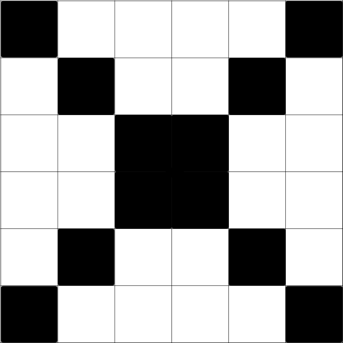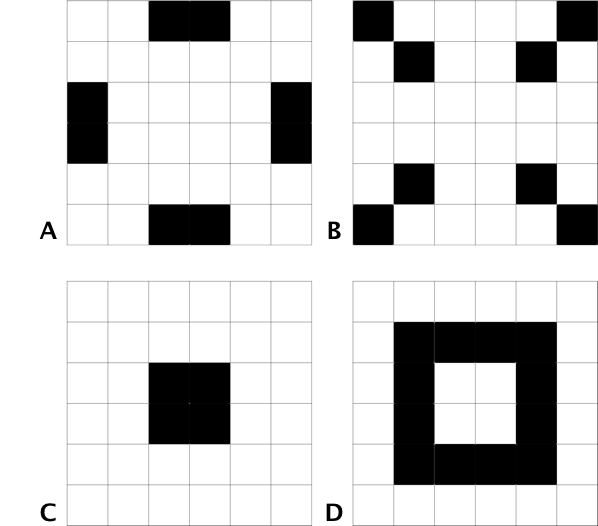Simple Rules Surprising Results

Conway's Game of Life is a simple algorithm that produces complex and often beautiful results. It is played on a grid and follows the rules below.
- Any live cell with fewer than two live neighbors dies, simulating under-population.
- Any live cell with two or three live neighbors lives on to the next generation.
- Any live cell with more than three live neighbors dies, simulating overcrowding.
- Any dead cell with exactly three live neighbors becomes a live cell, simulating reproduction.
If the image above is the first generation (where black cells are living), which of the following would be the second?

Details and assumptions
Every cell not on the edges of the grid has neighbors: namely, any cell that is horizontally, vertically, or diagonally adjacent.
A generation constitutes one simultaneous application of the rules to every cell in the grid.
This section requires Javascript.
You are seeing this because something didn't load right. We suggest you, (a) try
refreshing the page, (b) enabling javascript if it is disabled on your browser and,
finally, (c)
loading the
non-javascript version of this page
. We're sorry about the hassle.
First of all, we notice that the four corner cells will die because they only have one living neighbor. We can also see that the cells that are diagonally adjacent to the corner cells will live on because they have two neighbors. The four cells in the middle, however, will not live on because each one has more than three living neighbors. The only answer choice that satisfies these three conditions is D .